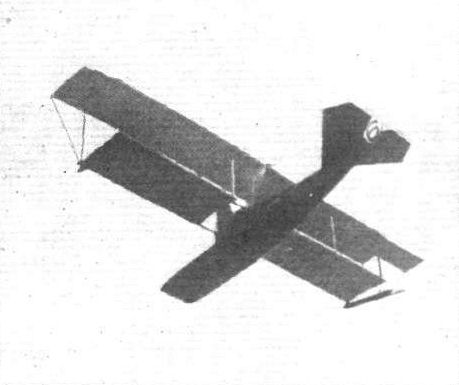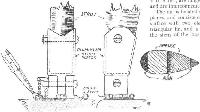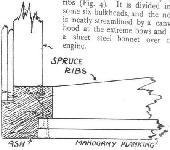
Описание
Страна: США
Год: 1915
Журнал Flight
Flight, December 17, 1915.
THE SHAW FLYING BOAT.
QUICK rising from the water, speed, and seaworthiness are the three primary considerations aimed at by the designer of the Shaw flying boat, and at the same time the comfort and protection of the pilot and passenger and the general stability of the machine in the air, have not been sacrificed to attain this end. From the accompanying scale drawings it will be seen that the Shaw flying boat is unique in several respects. The hull, for instance, is very short, and follows motor boat, or hydroplane, practice to a much greater extent than in most other flying boats. Another feature is that the engine is placed in the hull forward of the main planes and the pilot and passenger, and drives the propeller mounted at the rear of the planes through a shaft and chain. The tail, also, is unusually short with a slight angle of incidence, being so designed to facilitate the "get off," and to eliminate tail drag in so doing. Although it is typically a "sporting" 'bus, the Shaw flying boat is also adaptable to naval or military requirements, for, in addition to the foregoing features, provision is made for mounting a gun in front of the foremost cock-pit.
The main planes are of the double-surfaced laminated-rib type, having a chord of 5 ft. 6 ins., and a span of 42 ft. 4 ins. and 34 ft. 4 ins. top and bottom respectively. The front spar, which forms the leading edge, is built up of three laminations of spruce, ash and spruce, laid one on the top of the other as shown in Fig. a. The ribs are also laminated in a similar manner with five laminations, the central member being of ash and the others of spruce. All the ribs are spaced 1 ft. apart. The top plane is in three sections, a central panel 6 ft. span to which the outer sections are attached, while the lower plane is in two sections with open spaces of about 16 ins. width on either side of the boat.
Irish linen doped with Emaillite is used for covering the planes. Top and bottom planes are separated 5 ft. 6 ins. apart by six pairs or struts. These are of streamline section, measuring 3 ins. by 1 1/8 ins., and are built up of five laminations of spruce and ash, as shown in Fig. 3. They are attached to the planes by special quick detachable sockets made of malleable aluminium nickel plated. Two balancing flaps, 7 ft. 2 ins. by 2 ft. 8 ins., are hinged to the rear spar of the top plane, and are interconnected.
The tail is located only a short distance from the main planes, and consists of a horizontal triangular stabilizing surface with two elevators hinged thereto, a vertical triangular fin, and a partly balanced rudder hinged to the stern of the boat and the vertical fin. The horizontal surface, which is in two sections, is set at a slight lifting angle, and is strongly mounted above the stern of the boat by tubular supports. The fin is similarly supported underneath.
The propeller, an 8 feet diameter Shaw, is mounted high up behind the main planes by an arrangement of tubular struts. It is driven, by a single chain, off the shaft from the engine, a 90 h.p. Johnson two-stroke, which is mounted in the forward portion of the boat.
Measuring 20 ft. long, the boat is of the single step type, the bottom, from the step to the nose, being of V form and curving upwards. Aft of the step the boat also curves slightly upwards and tapers to a point. The hull is built up of two-ply mahogany and canvas, copper riveted, over a framework of ash longitudinals and spruce ribs (Fig. 4). It is divided into some six bulkheads, and the nose is neatly streamlined by a canvas hood at the extreme bows and by a sheet steel bonnet over the engine.
At the rear of the engine bonnet is the radiator, which is made to fit flush with the former. Behind the engine compartment are the passenger's and pilot's cockpits, each having a small cowl or dash in front as a protection from wind and spray. A Deperdussin type control is provided for both pilot and passengers.
- Журнал Flight
Фотографии
-
Журнал - Flight за 1915 г.
Fig. 1. - View of the first model Shaw flying boat in flight.
-
Журнал - Flight за 1915 г.
The 90 h.p. Johnson 2-stroke engine, in its cockpit, of the Shaw flying boat.
-
Журнал - Flight за 1915 г.
Fig. 2. - The Shaw Flying Boat. - The construction of the front spar and ribs.
-
Журнал - Flight за 1915 г.
Fig. 3. - The Shaw Flying Boat - The interplane strut socket and section of strut.
-
Журнал - Flight за 1915 г.
Fig. 4. - The Shaw Flying Boat. - Method of building up the hull.
-
Журнал - Flight за 1915 г.
THE SHAW FLYING BOAT. - Plan, side, and front elevation to scale.






